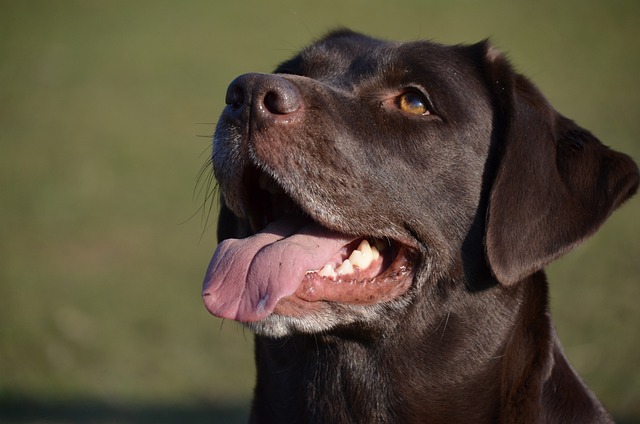
What are 5 common foods to feed dogs if they have an upset stomach
If you’ve ever watched your dog turn away from their food, then spend the next hour pacing and whimpering, you know the panic of an upset stomach.
Walking your dog on scorching summer pavement can turn a pleasant outing into a painful ordeal for your furry companion. When asphalt temperatures soar above 125°F on a typical 85°F day, your dog's sensitive paw pads face serious risk of burns and blistering. Many pet owners don't realize that if the pavement feels uncomfortably hot to your bare hand after five seconds, it's already too hot for your dog's paws. The "seven-second rule" serves as a quick test – place your palm flat against the pavement, and if you can't keep it there comfortably for seven seconds, neither can your dog.
Burns from hot surfaces don't just cause immediate pain; they can lead to infections, permanent scarring, and behavioral changes that make future walks stressful. Dogs experiencing paw burns often exhibit limping, excessive licking, blistering, or refusing to walk altogether. These injuries heal slowly and can become complicated if dirt or debris enters the wounds. Understanding these risks helps explain why learning to protect dog paws from hot pavement becomes essential for responsible pet ownership, especially during summer months when temperatures regularly exceed comfortable limits.
Creating effective DIY dog paw protection doesn't require expensive specialty products or complicated crafting skills. Your household likely contains several items that can serve as temporary paw protectors. Clean cotton socks provide excellent coverage and can be secured with medical tape or hair ties around the ankle area. Bandanas cut into strips and wrapped around paws offer another accessible option, though they require careful attention to circulation. For immediate cooling relief, frozen gel packs wrapped in thin towels can soothe already-heated paw pads before applying protective barriers.
Baby socks work particularly well for smaller dogs, while tube socks accommodate larger breeds. The key lies in choosing materials that breathe while providing barrier protection. Avoid plastic bags or non-porous materials that trap heat and moisture, potentially creating worse conditions than bare paws. Rubber dishwashing gloves can be modified by cutting finger portions and securing them with elastic bands, though this requires careful monitoring to prevent constriction.
Building homemade paw protectors for dogs starts with measuring your dog's paw dimensions when they're relaxed and weight-bearing. Begin with clean, dry socks that fit snugly without restricting circulation. Slide the sock over each paw, ensuring the fabric covers the entire pad area and extends slightly up the leg. Secure the opening with medical tape wrapped around the ankle – never too tight, as this can cut off circulation. You should be able to slip one finger between the tape and your dog's leg comfortably.
For dogs who resist wearing socks, try introducing the protectors gradually during indoor practice sessions. Start by having your dog wear them for just five minutes, gradually increasing duration while offering treats and praise. Some dogs accept rear paw protection more readily than front paw coverage, so consider starting with hind feet first. Remember that homemade protectors aren't designed for extended wear – remove them after walks to allow paws to breathe and check for any signs of irritation or constriction.
Testing your DIY protectors on cooler surfaces before venturing onto hot pavement ensures they'll stay secure during actual use. Walk your dog on carpet or grass while they're wearing the protectors, watching for signs of discomfort or shifting that might indicate poor fit. Adjust tape tension and sock positioning as needed, keeping spare materials handy for quick repairs during longer outings.
Beyond creating physical barriers, several strategies help keep dog paws safe from heat throughout summer months. Schedule walks during early morning hours before sunrise or late evening after sunset when pavement temperatures drop significantly. The coolest pavement temperatures typically occur between 6 AM and 8 AM, making these ideal times for longer walks. If midday walks become necessary, seek shaded routes through parks or tree-lined streets where natural canopy provides cooling relief.
Paw balms and moisturizers designed for dogs can strengthen pad resilience against heat damage. Apply these products regularly, especially after walks, to maintain healthy pad condition. Some balms contain ingredients that provide mild heat protection, though they shouldn't replace proper timing and protective measures. Always check ingredient lists to ensure products don't contain harmful substances like zinc oxide or artificial sweeteners.
Hydration plays a crucial role in helping dogs regulate body temperature during hot weather. Carry water for both drinking and emergency paw cooling, and consider investing in a collapsible bowl for convenience. Dogs showing signs of overheating – excessive panting, drooling, or lethargy – need immediate cooling and shade. Pour cool water over their paw pads and belly area while seeking veterinary attention if symptoms persist.
Regular paw inspections become even more important during summer months. Check between toes for foreign objects, examine pads for cuts or abrasions, and monitor for signs of infection or irritation. Dogs with existing paw injuries or conditions like allergies may need additional protection or modified walking schedules. Keep nail trims current, as longer nails can alter how dogs distribute weight on their pads, potentially increasing injury risk.
Certain situations require immediate veterinary attention rather than home treatment. Deep burns that expose underlying tissue, signs of infection like swelling or discharge, and burns covering large pad areas need professional medical care. Dogs refusing to bear weight on affected paws or showing signs of systemic illness alongside paw injuries require emergency veterinary evaluation. Many municipalities have animal control ordinances regarding extreme weather conditions, and some areas prohibit walking dogs on surfaces above specific temperatures.
Prevention remains more effective than treatment when it comes to protecting your dog's paws from hot pavement. While DIY solutions provide valuable emergency options, they work best as part of comprehensive hot weather safety practices. Understanding your local climate patterns, recognizing early warning signs of heat-related paw problems, and maintaining regular veterinary checkups ensure your dog's paws stay healthy throughout summer adventures. Remember that even with protection, shortened walks and increased vigilance become necessary when temperatures soar, prioritizing your dog's comfort and safety above exercise routines.

If you’ve ever watched your dog turn away from their food, then spend the next hour pacing and whimpering, you know the panic of an upset stomach.

If you’ve ever cleaned up diarrhea or watched your dog vomit after meals, only to feel helpless as they refuse their next bowl of food, you know the stress of a sensitive stomach.

If you’ve ever stared at the ingredient list on your dog’s kibble, wondering what “meat by-products” really are, you’re not alone. New dog owners

If you’ve ever noticed your dog suddenly shaking their head like a wet towel, or pawing at their ear until it’s red and sore, you might’ve wondered if they’re just being “naughty.”

Finding worms in your dog’s stool or noticing them scooting uncomfortably across the floor is enough to make any pet owner’s heart sink.

If you’ve ever dreamed of having a dog but hesitated because your eyes water and nose runs around furry pets, you’re not alone.